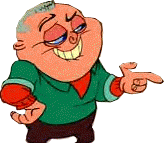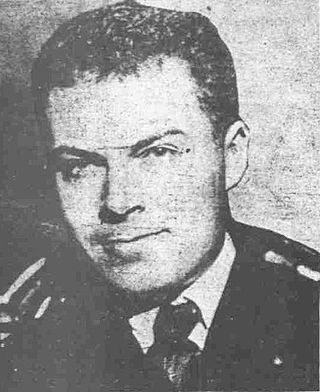
William Boyd Watterson II is an American cartoonist who authored the comic strip Calvin and Hobbes. The strip was syndicated from 1985 to 1995. Watterson concluded Calvin and Hobbes with a short statement to newspaper editors and his readers that he felt he had achieved all he could in the medium. Watterson is known for his negative views on comic syndication and licensing, his efforts to expand and elevate the newspaper comic as an art form, and his move back into private life after Calvin and Hobbes ended. Watterson was born in Washington, D.C., and grew up in Chagrin Falls, Ohio. The suburban Midwestern United States setting of Ohio was part of the inspiration for Calvin and Hobbes. Watterson lives in Cleveland Heights as of January 2024.
A comic strip is a sequence of cartoons, arranged in interrelated panels to display brief humor or form a narrative, often serialized, with text in balloons and captions. Traditionally, throughout the 20th and into the 21st century, these have been published in newspapers and magazines, with daily horizontal strips printed in black-and-white in newspapers, while Sunday papers offered longer sequences in special color comics sections. With the advent of the internet, online comic strips began to appear as webcomics.

The National Cartoonists Society (NCS) is an organization of professional cartoonists in the United States. It presents the National Cartoonists Society Awards. The Society was born in 1946 when groups of cartoonists got together to entertain the troops. They enjoyed each other's company and decided to meet on a regular basis.

The Ren & Stimpy Show, commonly referred to as simply Ren & Stimpy, is an American comedy animated television series created by Canadian animator John Kricfalusi for Nickelodeon. Originally produced by Spümcø, the series aired from August 11, 1991, to December 16, 1995, spanning a total of five seasons and 52 episodes. The series follows the misadventures of Ren Höek, an emotionally unstable and psychopathic chihuahua dog; and Stimpy, a good-natured and dimwitted Manx cat. It is the third cartoon to be aired of the original three Nickelodeon animated series known as "Nicktoons", alongside Doug and Rugrats, and is considered to be one of the progenitor series of the brand.

Charles Monroe "Sparky" Schulz was an American cartoonist, the creator of the comic strip Peanuts which features his two best-known characters, Charlie Brown and Snoopy. He is widely regarded as one of the most influential cartoonists in history, and cited by many cartoonists as a major influence, including Jim Davis, Murray Ball, Bill Watterson, Matt Groening, and Dav Pilkey.

Peanuts is a syndicated daily and Sunday American comic strip written and illustrated by Charles M. Schulz. The strip's original run extended from 1950 to 2000, continuing in reruns afterward. Peanuts is among the most popular and influential in the history of comic strips, with 17,897 strips published in all, making it "arguably the longest story ever told by one human being"; it is considered to be the grandfather of slice of life cartoons. At the time of Schulz's death in 2000, Peanuts ran in over 2,600 newspapers, with a readership of roughly 355 million across 75 countries, and had been translated into 21 languages. It helped to cement the four-panel gag strip as the standard in the United States, and together with its merchandise earned Schulz more than $1 billion.

Patrick McDonnell is a cartoonist, author, and playwright. He is the creator of the daily comic strip Mutts, which follows the adventures of a dog and a cat, that has been syndicated since 1994. Prior to creating Mutts, he was a prolific magazine illustrator, and would frequently include a dog in the backgrounds of his drawings.

George Joseph Herriman III was an American cartoonist best known for the comic strip Krazy Kat (1913–1944). More influential than popular, Krazy Kat had an appreciative audience among those in the arts. Gilbert Seldes' article "The Krazy Kat Who Walks by Himself" was the earliest example of a critic from the high arts giving serious attention to a comic strip. The Comics Journal placed the strip first on its list of the greatest comics of the 20th century. Herriman's work has been a primary influence on cartoonists such as Elzie C. Segar, Will Eisner, Charles M. Schulz, Robert Crumb, Art Spiegelman, Bill Watterson, and Chris Ware.

Spümcø, Inc. was an American animation studio that was active from 1989 to 2005 and based in Los Angeles, California. The studio was best known for working on the first two seasons of The Ren & Stimpy Show for Nickelodeon and for various commercials. The studio won several awards, including an Annie Award for Best Animated Short Subject for the music video of the song "I Miss You" by Björk.

Elzie Crisler Segar, known by the pen name E. C. Segar, was an American cartoonist best known as the creator of Popeye, a pop culture character who first appeared in 1929 in Segar's comic strip Thimble Theatre.

Stephan Thomas Pastis is an American cartoonist and former lawyer who is the creator of the comic strip Pearls Before Swine. He also writes children's chapter books, commencing with the release of Timmy Failure: Mistakes Were Made. The seventh book, It's the End When I Say It's the End, debuted at #4 on The New York Times Best Seller list for Children's Middle Grade Books.

Michael John Kricfalusi, known professionally as John K., is a Canadian illustrator and blogger, as well as a former animator and voice actor. He is the creator of the animated television series The Ren & Stimpy Show, which was highly influential on televised animation during the 1990s. From 1989 to 1992, he was heavily involved with the first two seasons of the show in virtually every aspect of its production, including providing the voice of Ren Höek and other characters. In 2009, he won the Inkpot Award.

William Aloysius "Bil" Keane was an American cartoonist most notable for his work on the newspaper comic The Family Circus. It began in 1960 and continues in syndication, drawn by his son Jeff Keane.

It's Only a Game was a sports-and-game-oriented comics panel by Charles M. Schulz, creator of Peanuts. This panel feature ran for 14 months, from November 3, 1957, to January 11, 1959. It's Only a Game was distributed by United Feature Syndicate.

George Liquor is a cartoon character created by John Kricfalusi. Liquor is most famous for his appearances on The Ren & Stimpy Show. He is considered Kricfalusi's signature character and was a mascot for Kricfalusi's defunct animation studio, Spümcø. Kricfalusi portrayed George Liquor as a patriotic, outspoken, politically conservative blowhard. Kricfalusi described Liquor as his favorite character to animate.
The comic strip switcheroo was a massive practical joke in which several comic strip writers and artists (cartoonists), without the foreknowledge of their editors, traded strips for a day on April Fools' Day 1997. The Switcheroo was masterminded by comic strip creators Rick Kirkman and Jerry Scott, creators of the Baby Blues daily newspaper comic strip.

Krazy Kat is an American newspaper comic strip, created by cartoonist George Herriman, which ran from 1913 to 1944. It first appeared in the New York Evening Journal, whose owner, William Randolph Hearst, was a major booster for the strip throughout its run. The characters had been introduced previously in a side strip with Herriman's earlier creation, The Dingbat Family. Actually, Bill Blackbeard discovered two earlier appearances in the Herriman comic strip Baron Bean but almost all sources ignore this slightly earlier appearance. The phrase "Krazy Kat" originated there, said by the mouse by way of describing the cat. Set in a dreamlike portrayal of Herriman's vacation home of Coconino County, Arizona, KrazyKat's mixture of offbeat surrealism, innocent playfulness and poetic, idiosyncratic language has made it a favorite of comics aficionados and art critics for more than 80 years.

Clifford Sterrett was an American cartoonist best known as the creator of the comic strip Polly and Her Pals.

Andrews McMeel Syndication is an American content syndicate which provides syndication in print, online and on mobile devices for a number of lifestyle and opinion columns, comic strips and cartoons and various other content. Some of its best-known products include Dear Abby, Doonesbury, Ziggy, Garfield, Ann Coulter, Richard Roeper and News of the Weird. A subsidiary of Andrews McMeel Universal, it is headquartered in Kansas City, Missouri. It was formed in 2009 and renamed in January 2017.
















